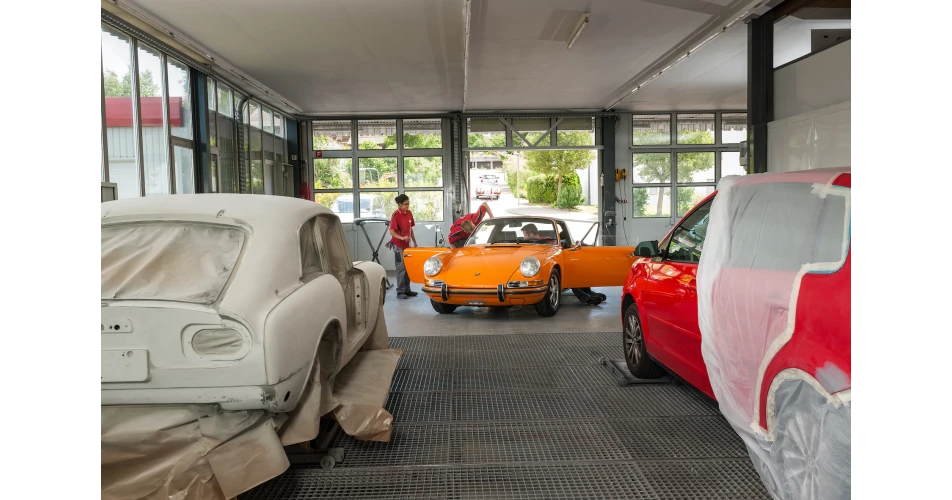Paint supplier Standox has issued some useful advice to bodyshops on how to make the most of the lucrative classic car restoration market.
Classic cars continue to grow in popularity. A new world-record was set in August 2017 when a 1950s Aston Martin DBR1 sold at auction for 22,550,000USD, and approximately 30,000 American classic cars were shipped into Europe in 2018. Over the past decade, investments in cars have outperformed coins, diamonds and vintage wine by some considerable margin. This trend presents an opportunity for bodyshops to perfect their classic car restoration skills and grow this particular segment of the market.
Standox has a long-standing reputation of offering professional advice to bodyshops specialising in classic car restorations. The Standox Brand Manager for Europe, Olaf Adamek, explains, “Classic car restoration requires a high level of both technological know-how and skilled labour, but it can be a lucrative market for bodyshops. The customer base is strong, close-knit and resilient to shifts in the economy. They are often knowledgeable about classic car restoration in general but they look to bodyshops for professional advice on the paint process. They need to feel that their prized possession is in safe hands.”
The biggest difference between paint on a classic and modern car is corrosion protection. Until the 1980s, vehicle bodies were mostly built from sheet metal, which is badly affected by moisture and humidity. Kevin Welling, Training Academy Manager for Axalta, the company behind the Standox brand says, “The refinisher’s number one priority should be to protect the historical vehicle effectively against corrosion. It’s crucial to avoid contact between the putty and the bare metal and to counter the risk of corrosion when preparing the substrate. A thin insulation layer should always be applied between the bare metal and the putty. If not, the putty acts like a dry sponge that absorbs water and passes it on to the metal.”
Standox recommends a three-stage build-up consisting of an acid primer and a VOC filler. After the appropriate pre-treatment the bare metal should be insulated with a Standox acid primer, for example Etching Adhesion Primer U3100 and a VOC filler, such as VOC Xtra Filler U7560, in accordance with the specifications of the respective Standox repair system. The VOC Filler isolates sanding marks and pores and helps to even out the surface, making it the ideal foundation for the topcoat.
Digitalisation of the colour management process has made the colour matching process for classic cars easier and more accurate. Refinishers can use the Standox digital colour management tools such as the Genius iQ spectrophotometer and the Standowin iQ software to achieve the perfect match and to reproduce the original shade. Standox can also draw on its long-standing classic car restoration experience to identify the right colours.
Standox also supports restorers with Standopedia, an online guide where refinishers can find technical information as well as valuable expertise on specialist topics related to the refinish process, such as the repair of special colours or the application of new products. In addition, Standox offers a series of technical information journals, the Standothek guides, with helpful information for refinishers looking to update their skills on the restoration of classic cars.
For information from Standopedia, please visit the Service & Training menu on the Standox homepage or at www.standox.co.uk/standopedia. The classic car area in Standox’s Standothek can be found under Prestige and Classic Cars and can be downloaded at www.standox.co.uk/standotheks.
